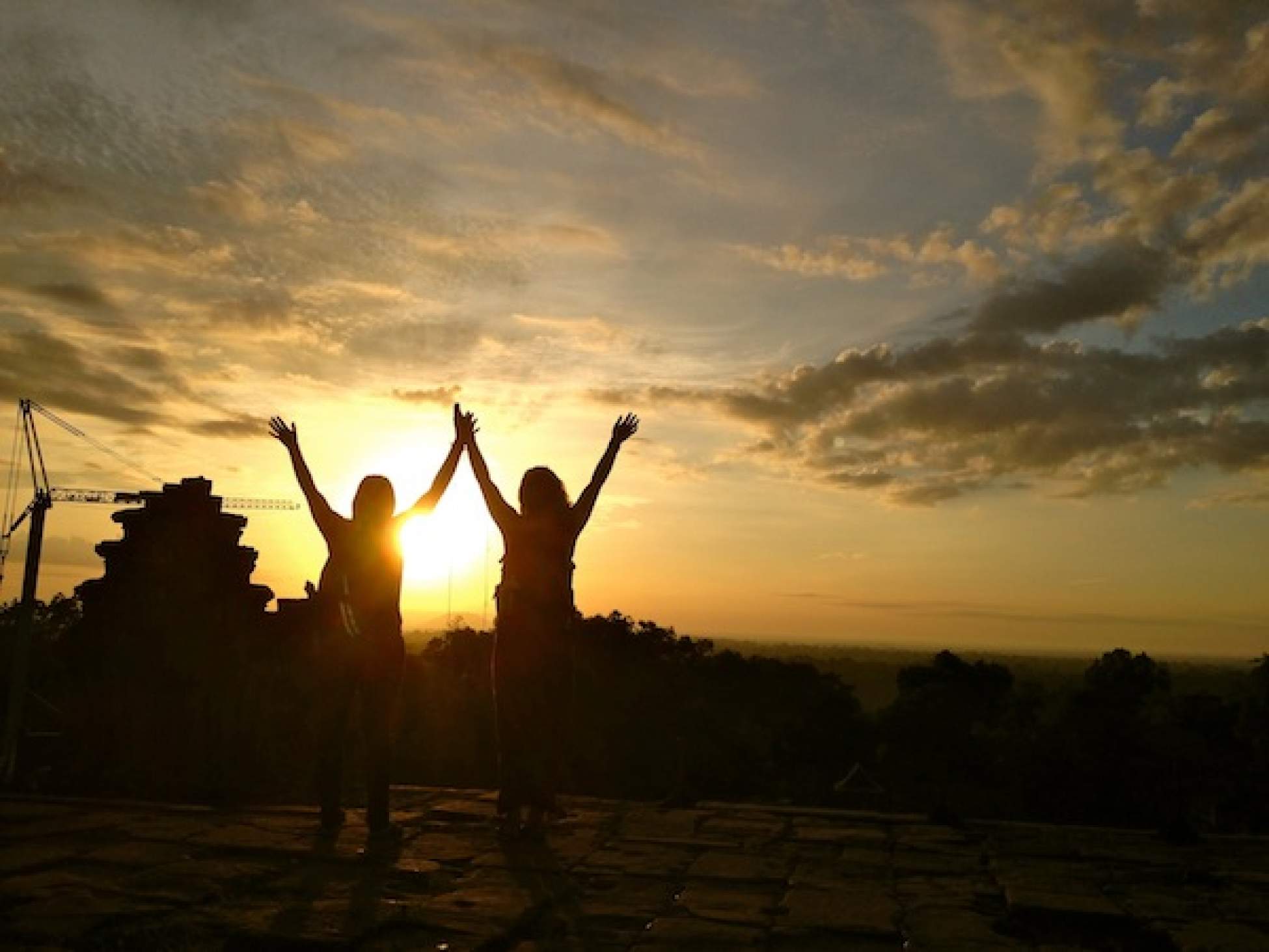After our hike down from the hill tribe village to Chiang Rai, we raced to a guesthouse in the city for a much-anticipated warm shower. We spent a couple days visiting amazing temples—both ancient and modern—while re-adjusting to the busy hum of the city. We biked around the streets in an effort to seek out any hidden markets or local restaurants and woke up at sunrise to observe monks walking around barefoot collecting their alms (any food offerings from the locals).
However, it was time to say goodbye to Thailand for a couple of weeks and make the 20-hour trek to our next destination; Cambodia. Let me tell you, nothing beats a bus ride through Southeast Asia without any washrooms or air-conditioning on-board and the sound of Khmer karaoke blasting out of the speakers. The best you can do is embrace the experience and remind yourself (no matter how hungry you are) to avoid eating any noodle soup that smells the slightest bit off. (Remember what I said; the buses have no washrooms.)
Once we made it across the Cambodian boarder we went directly to Siem Reap, a bustling city with a lot of history. It was time to put away the Thai baht and get our hands on some American dollars, as that was the preferred currency in the country. The switch from greeting people with “sawatdee kah” (“hello” in Thai) to using basic Khmer took a couple days of getting used to. The recurring facial expressions that I received from the locals when speaking with them made me realize how I never failed to butcher their language. However, they did seem to appreciate the effort.
For anyone visiting Siem Reap, the following are two things that I highly recommend:
1. Waking up at 4:30am to watch the sunrise over one of the Seven Wonders of the World, Angkor Wat. In an effort to avoid the outrageous number of tourists surrounding the biggest temple, we asked our tuk tuk driver to take us to the next closest temple.
At this point it was still dark out, and the mild temperature in the air was refreshing compared to the sweltering heat we were use too during the day. After being dropped off, we walked about 10 minutes on a trail taking us right to the top of a temple called Phnom Bakeng. The rising sun made the sky look like a watercolour painting and the view from the top made Cambodia look infinite. After finally convincing myself I wasn’t dreaming and this place actually existed, we made our way back to the tuk tuk and visited other ancient temples in the area. I found it difficult to wrap my head around the fact that Angkor Wat was built in the 12th century and still standing relatively strong.
2. The Landmine Museum is where we ventured later that day. The founder of the museum is Aki Ra, an ex child soldier who has disabled and removed over 50,000 landmines throughout Cambodia. The museum also offers a relief facility for village children who have been affected by landmines. It’s a place that helps ease some of the overwhelming hardships they have been through, as well as somewhere they can live and go to school.
It was extremely difficult reading all of their stories, each being so unique, powerful and unimaginable. The museum truly puts Cambodia’s recent tragic history into perspective. As hard as it was for us to leave Siem Reap we knew we had much more to discover at our next destination, Phnom Penh.
Top Two Tourist Sites in Siem Reap
Written by Anna Sawchuk
Anna crosses over into Cambodia from Thailand.
Published in
Volunteer Abroad Blogs
Tagged under

Anna Sawchuk
Originally from Vancouver, Anna Sawchuk now lives in Toronto but is moving once again to experience life in Holland at Tilburg University. She gets slightly claustrophobic staying in the same city for an extended period of time. Cure your travel itches with Anna’s stories about travelling and volunteering in Southeast Asia with Operation Groundswell.
